Don't make excuses. A loss is a loss. - Cassandra
Classic.
As a personal project of mine, I had decided at one point to make Cassandra's sword & shield from the latest installment of the franchise, SoulCalibur IV. My wife mentioned "If you make the armor, then I'll do the rest of the costume."
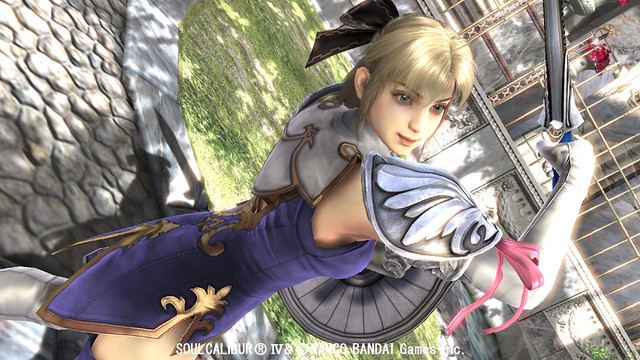
And thats where we find ourselves now.
The "armor" amounted, really, to a pair of shoulder pauldrons. I liked the challenge of this project - it seems like lately all I've been making is guns, and the chance to do something organic and sculpted. It may not be the world's best method, but I started out by making some 2D illustrated flats of the pauldron and arm cuff. Since they're symmetrical front to back, making a single pauldron and molding it seemed like the best course of action.

Starting off, I made a base from sculpting armature wire and mesh.

This shape was skinned in a thin layer of apoxie sculpt to define the shape and give me a base to work over.
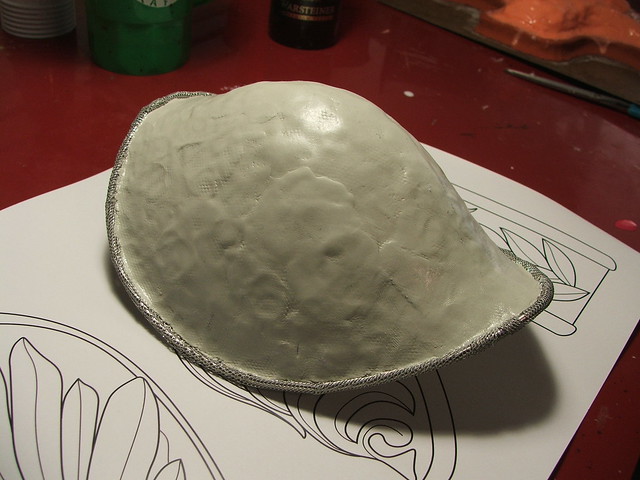
I wish I had a more scientific method of doing this, but from there I pretty much just eyeballed the blueprint drawings onto the surface of the form. after working with a dial caliper and ruler on my more "geometric" builds, this took some refining to get where I liked it.

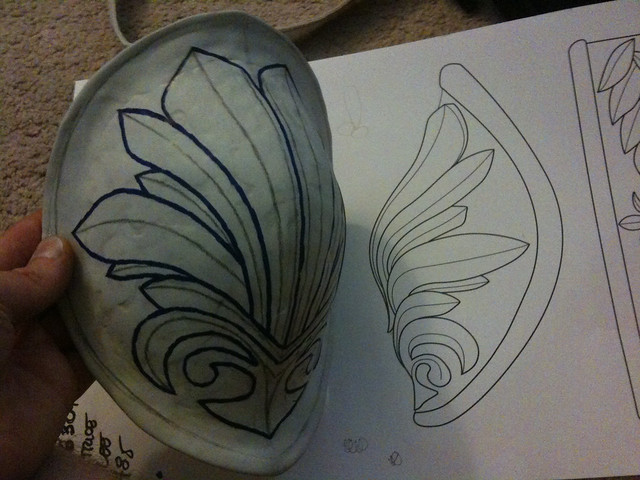
More apoxie sculpt followed (and I was trying to use the very last of that awful tub of orange colored clay I had) to build up the shape of the filigree.
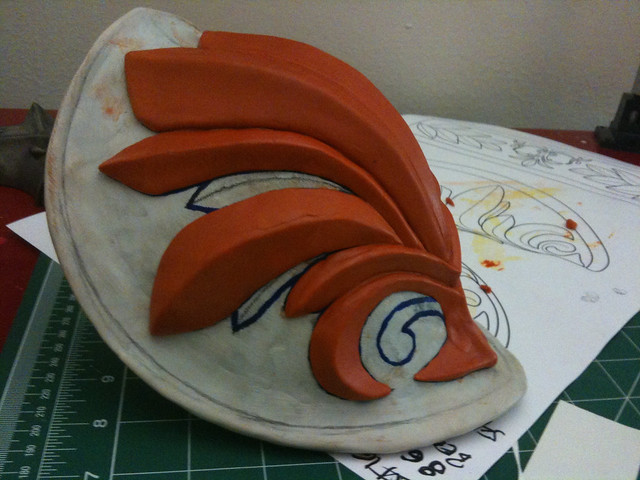

Since my sculpting skills are a C+ at best, there was a lot of sanding to be done after the clay had dried.
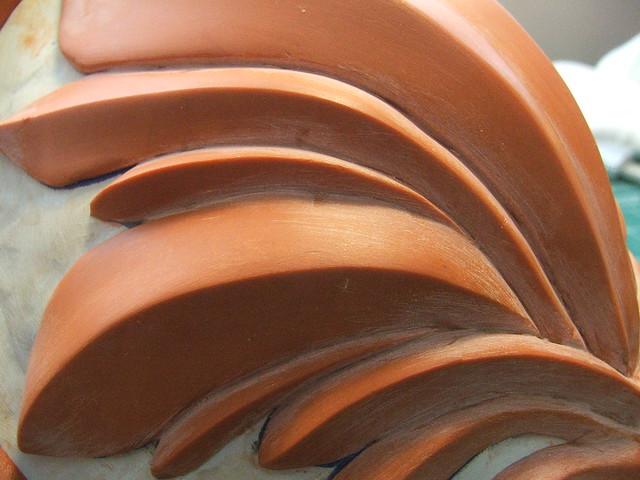
After shaping the feathery bits, the edge was also added in more apoxie sculpt. The whole thing was starting to get pretty weighty at this point, so its a good thing I decided to go with molded pieces for the final.

Sanding...
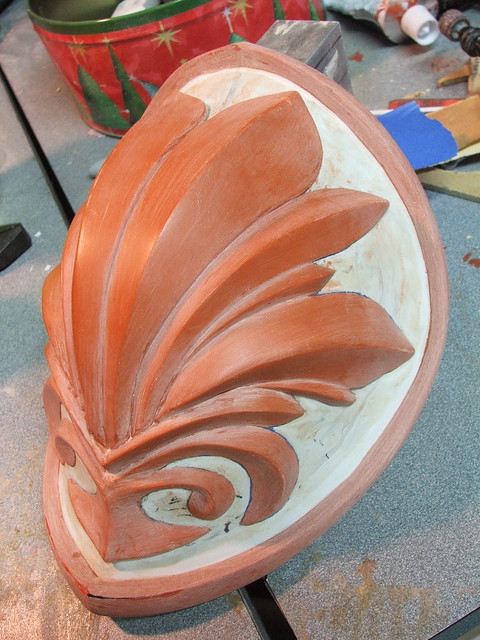
Spot Putty...
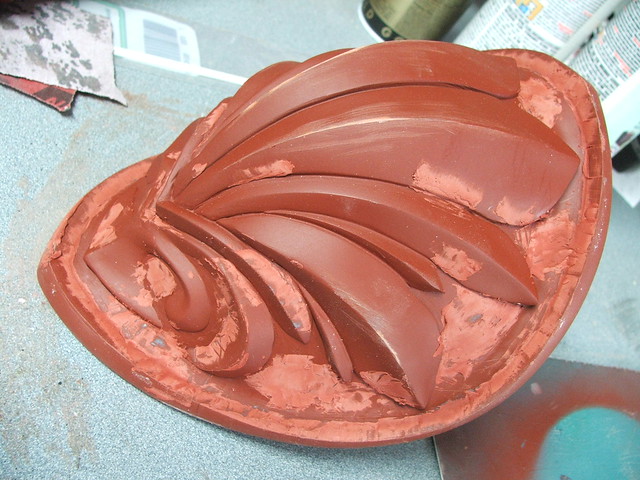
More sanding...
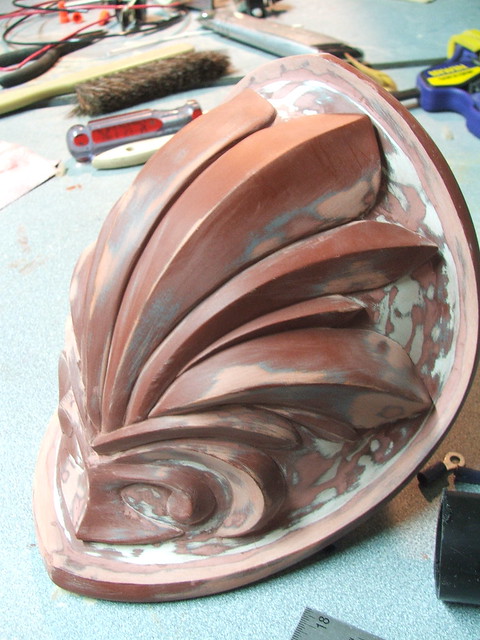
And some primer...
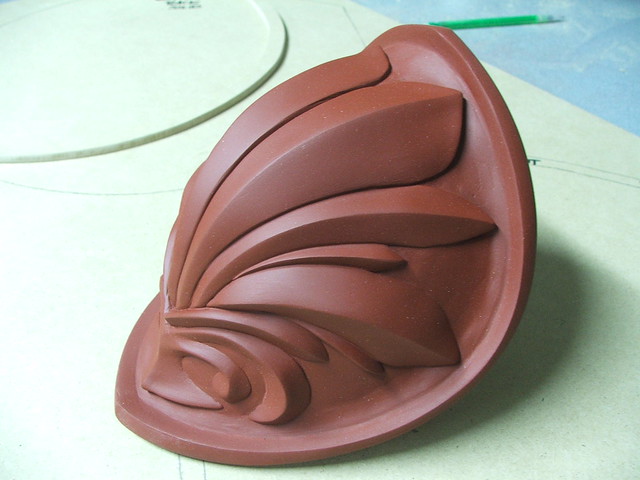
Then we're ready for molding!
The arm cuff followed a similar process. I measured the circumference of Emily's bicep to figure out how wide the base piece had to be to wrap around her arm. A piece of sintra served as a base to sculpt on top of, and the top parts were made with apoxie sculpt. Sparing you the details of sand/bondo/repeat, here's the jist:

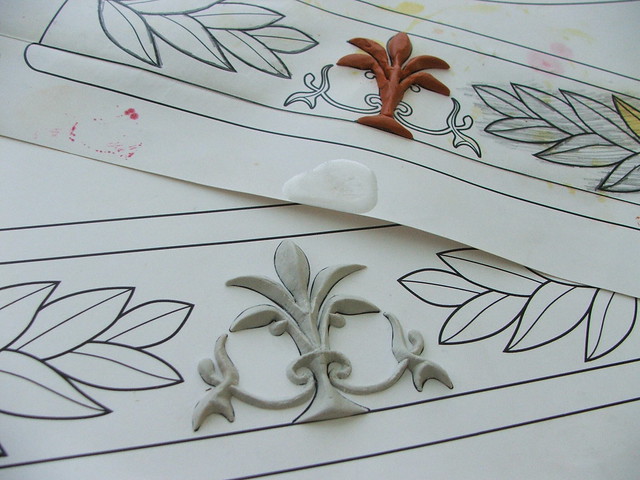
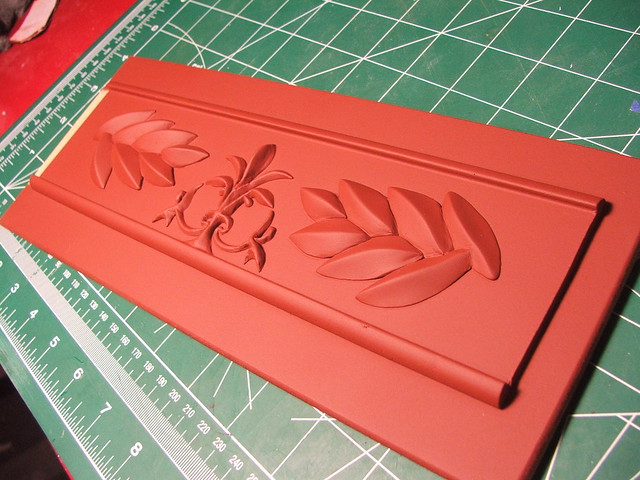
The pauldron molds were made with Rebound-25 silicone, while the arm cuff was done in Mold Max 30. The pauldron part was suspended on a PVC pipe for the brush coat first.
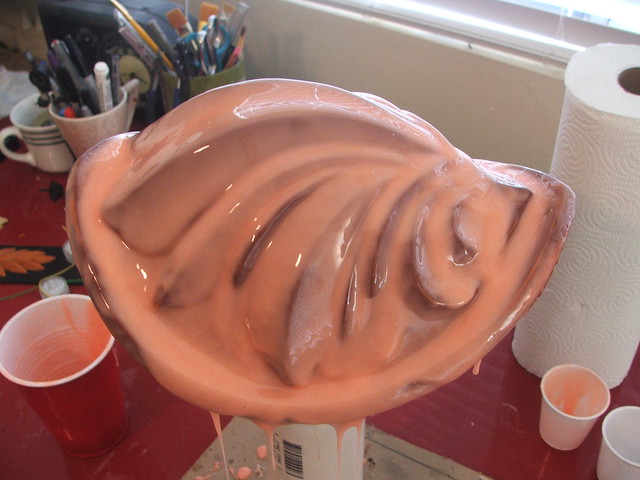
This was followed by thickened silicone, registration keys, and finally a jacket mold made from plasti-paste.
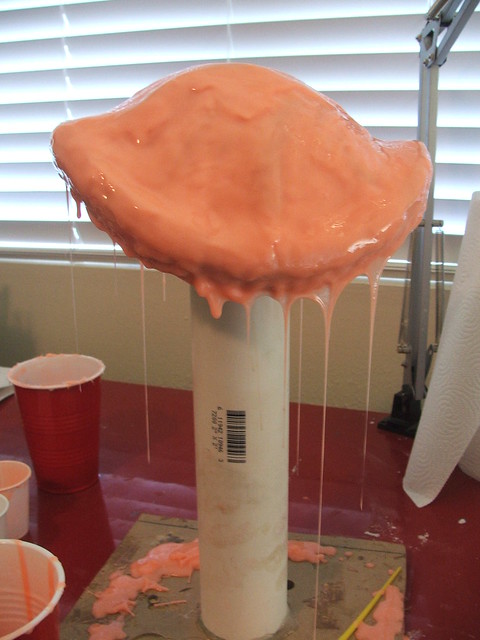
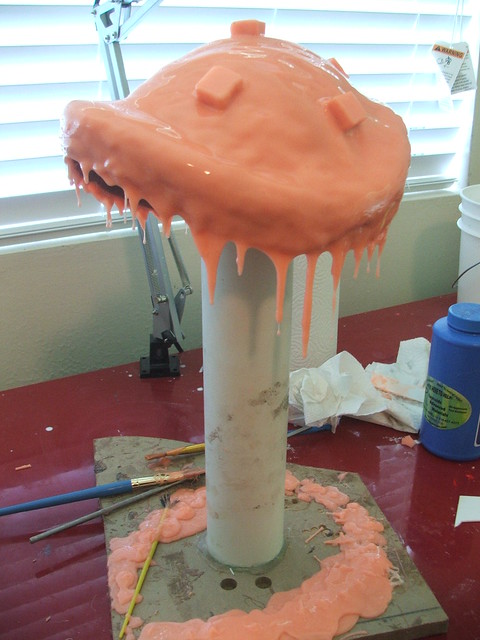
Look! A Hanar!
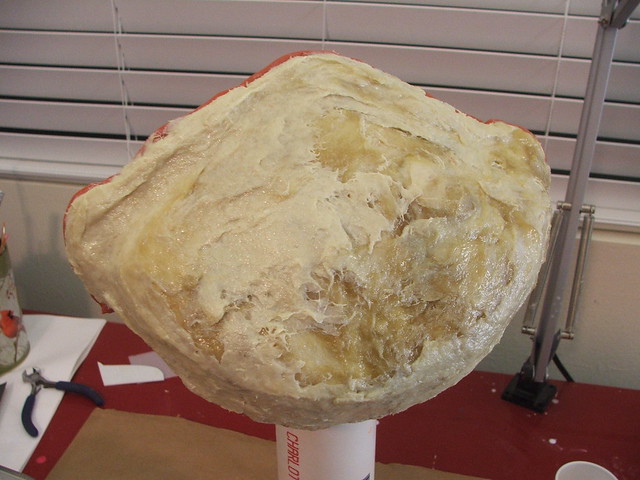
Originally, I had intended to make a front and back part to the piece, then join them and pour in resin to be slush cast. I was hoping this would make a nice, lightweight, hollow piece.
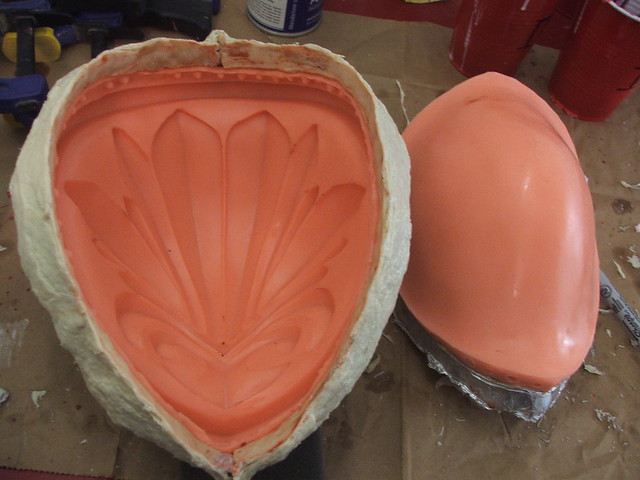
I was wrong. These were my first two attempts. I got better from the first to the second, but the piece is so thin that the resin wasn't flowing completely to all parts of the inner cavity. The first piece wasn't thick enough to hold its own shape, and the second one was so thin in some parts you could see through it.

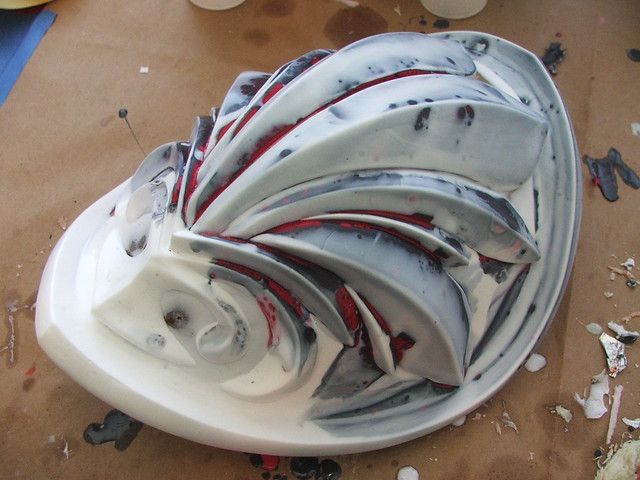
My third pass was done by removing the back part of the mold and slush casting the piece. MUCH better.
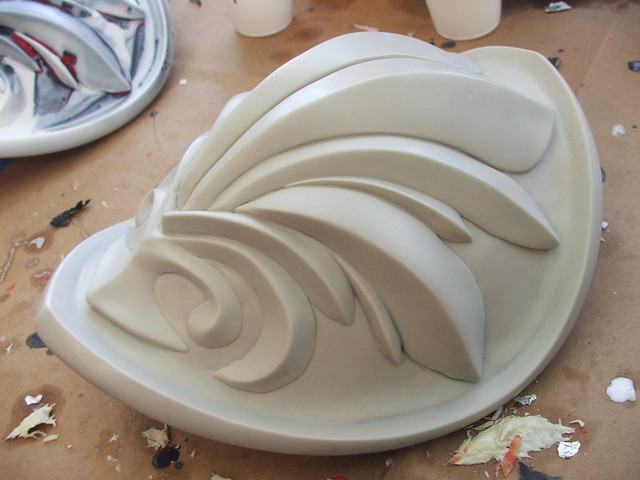
Progress?
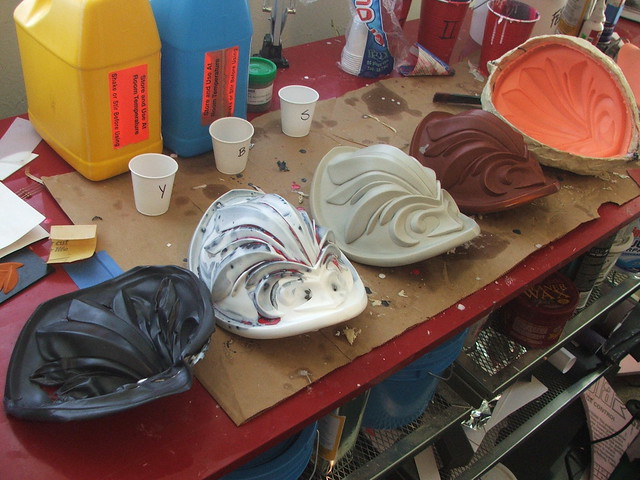
With the practice out of the way, I started on the final pulls. The mold was dusted with aluminum powder first, then I slush cast the pieces in Smoothcast 300, dyed black.
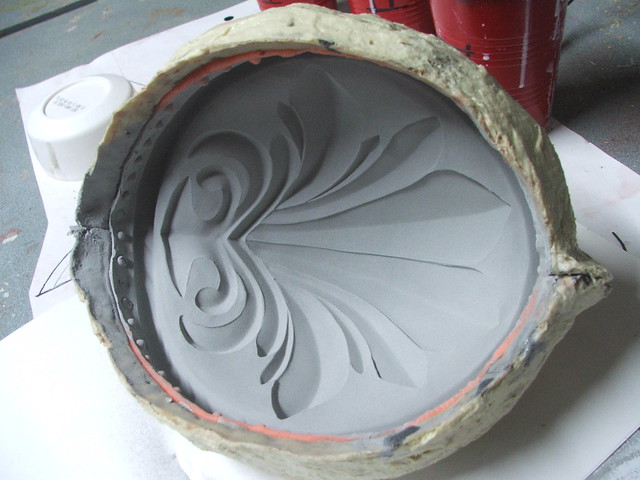

Before I pull the cover on that though, you might have noticed that I sculpted the arm cuff as a flat bar. This might seem odd as most people's arms aren't two-dimensional, but sculpting something on a curved surface gave me a headache just thinking about it. I had an idea when making this part; a bit of a gamble, but it really paid off in the end.
The mold was first done over the flat sculpt. Before pouring the resin, I made sure the mold rubber was completely level and on a flat surface.
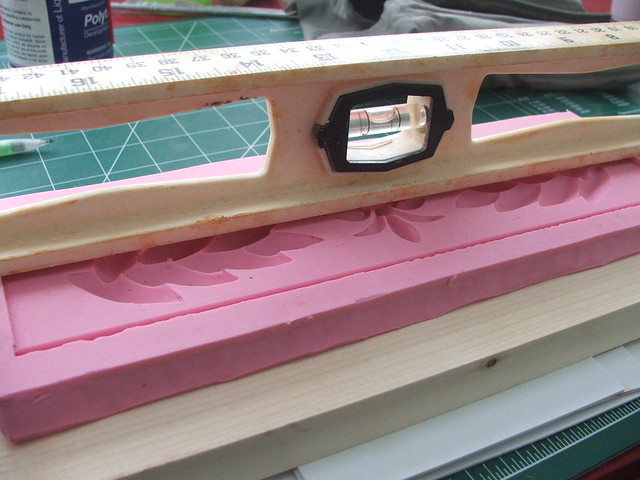
When pouring this piece, I used the same aluminum powder and black dye as before.
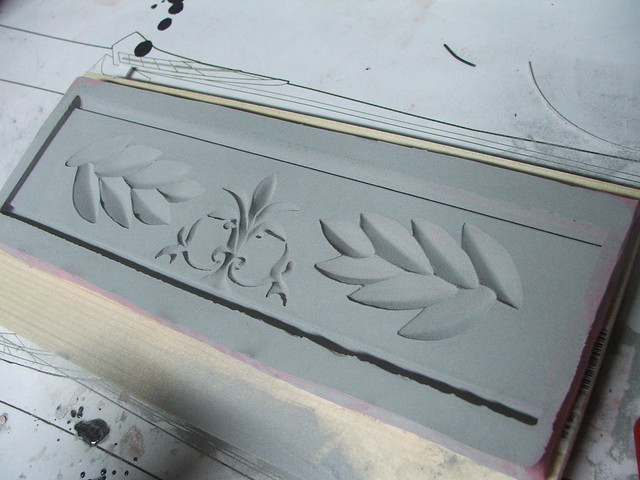
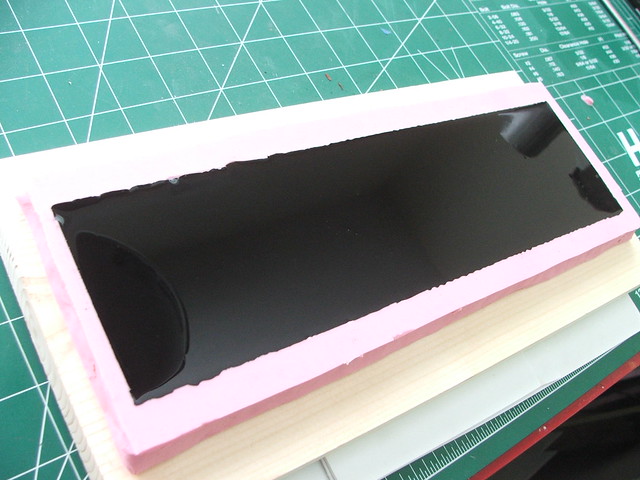
As resin cures, it starts to change color. At this point, its not 100% cured, but still rigid enough to maintain its shape. If you remove a pour from a mold too early, it can deform rather easily but still look similar to the desired shape. When the resin in the arm cuff mold started to change color, I picked up the rubber and wrapped it around a 3" steel pipe.
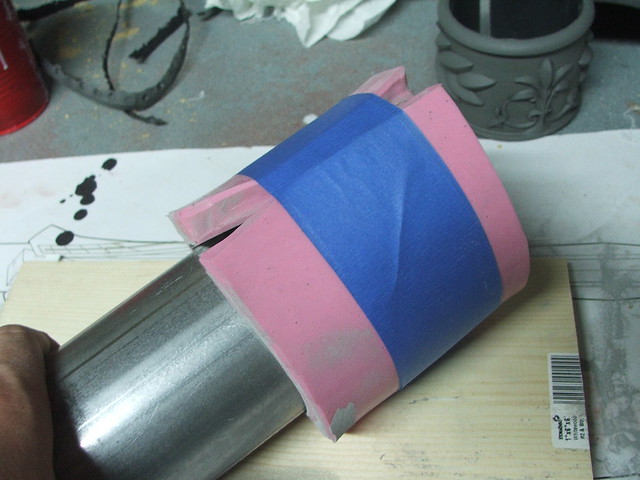
After about 30 minutes, the resin was fully cured and I was able to remove the piece - now perfectly cylindrical!

Here's the two pieces together after buffing the aluminum coating lightly with some steel wool.
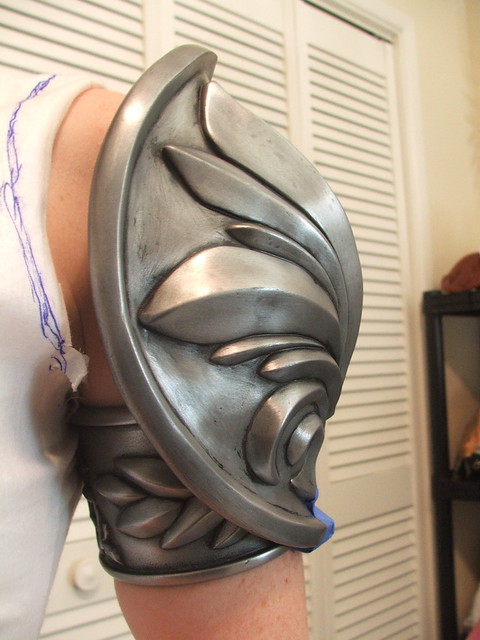
From here, I used shoe polish as a base coat of weathering.
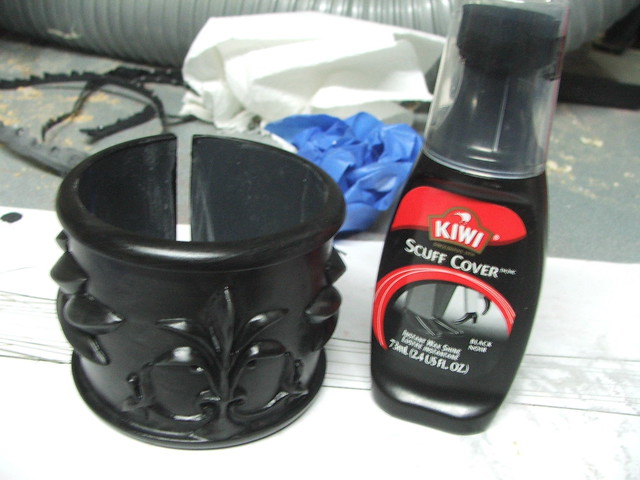
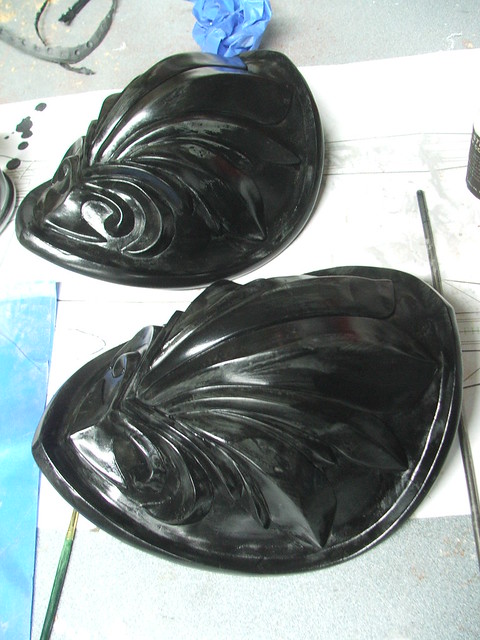
This was buffed off the higher parts to leave the underside dirty. After that, an airbrush was used with layers of dark brown and black to further knock back the recessed areas.

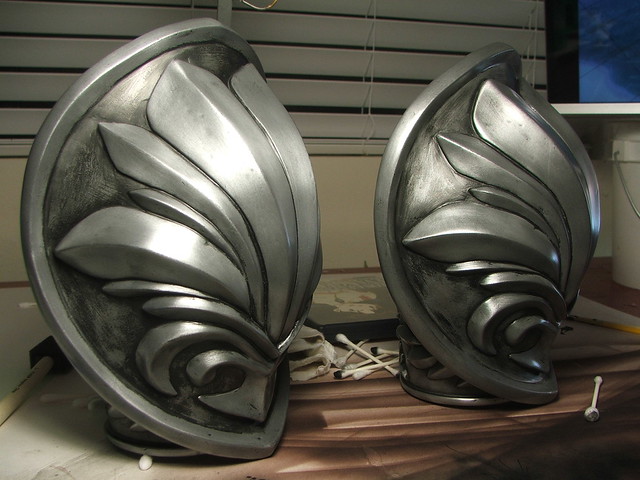
Apoxie Sculpt was used to level out the inside area of the pauldron, and the cuffs were epoxied in place.
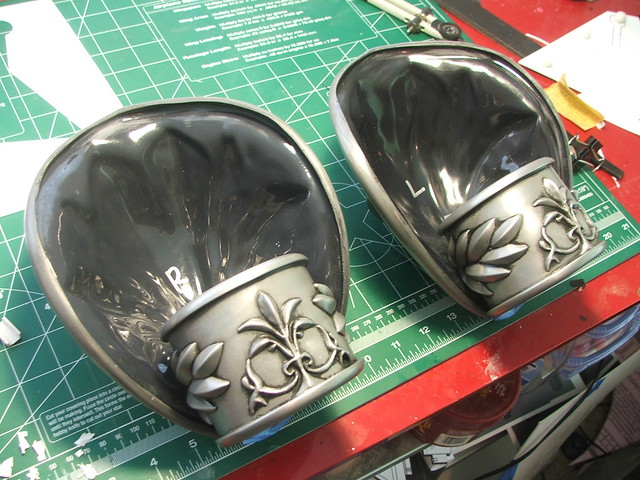
The finishing touch was a coat of rub-n-buff wax in "antique silver" and the *light red ribbons affixed to the middle of both pieces.
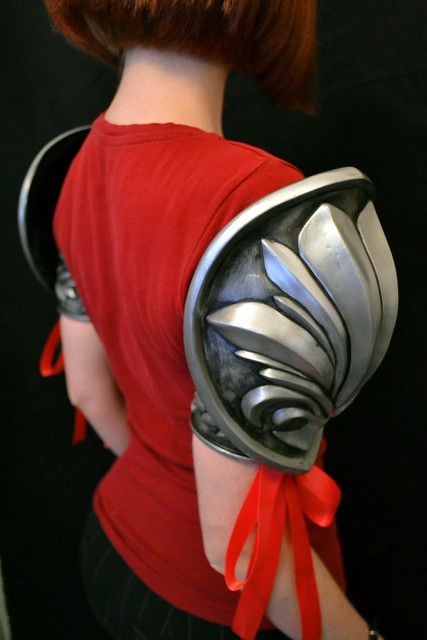
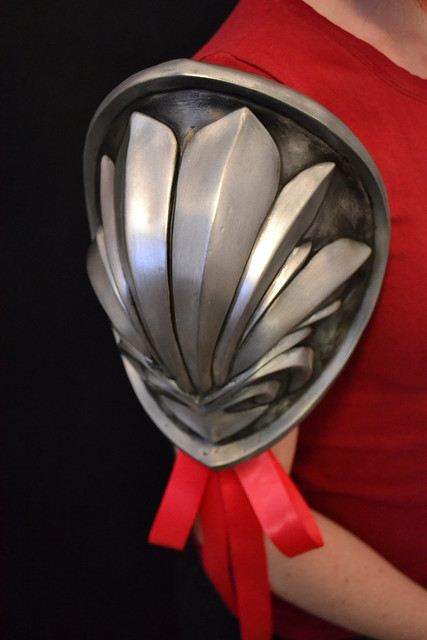
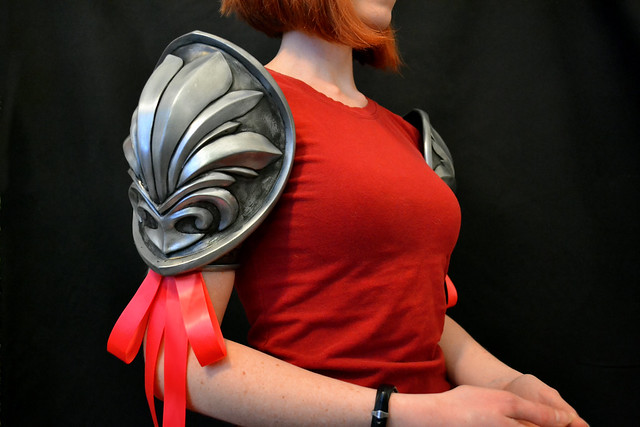
There are no straps that hold these in place. Each pauldron weighs just under 1lb, and since the arm cuffs are designed to be the same circumference as the wearer's arm, they stay in place via friction with only a small strip of 1/4" foam to take up any slack. They also do not affect the ability to move your arms in any direction, which is a LOT more than I can say for most videogame armor.
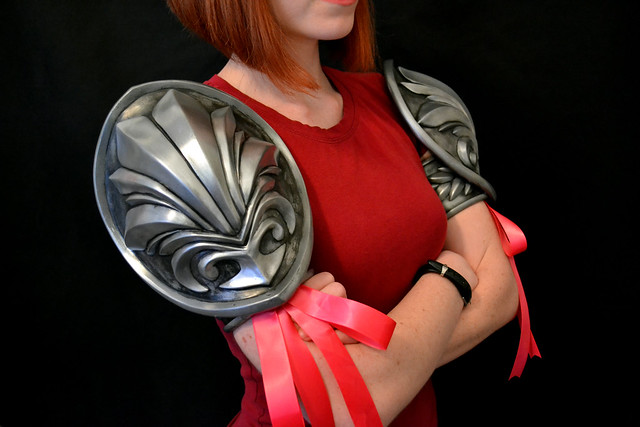
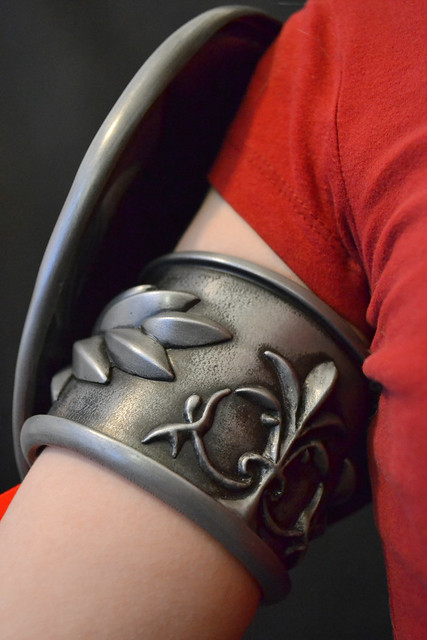
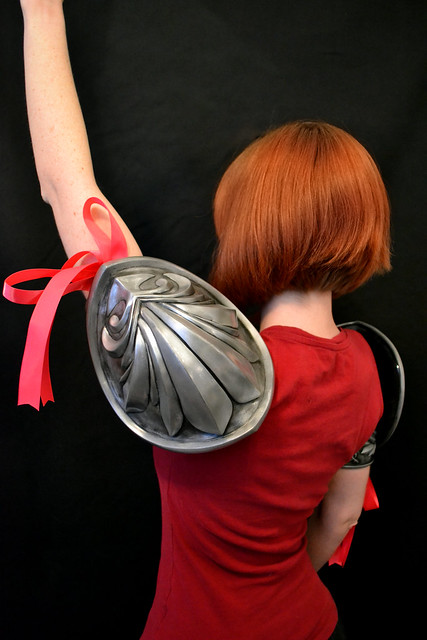
Posts detailing the build-up of Cassandra's sword and shield to come, and more pics of the build process for these can be found on my flickr page - thanks for reading!
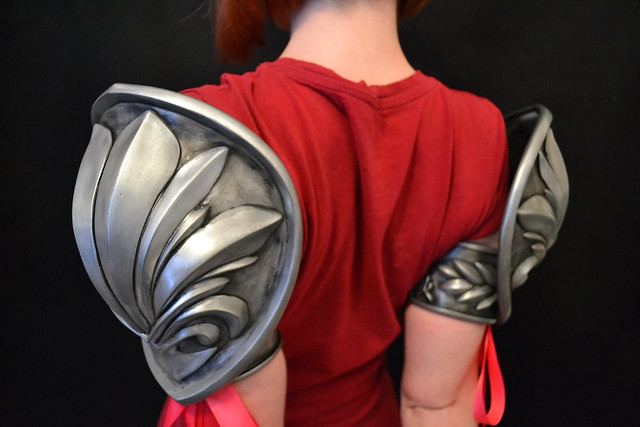

24 comments:
Which program did you use to make the 2D illustrations?
awesome as always.
Awesome work mate! I have considered getting into this sort of thing as a hobby, but programming and Model wargames take up most of my time.
God, this is still amazing everytime I see new things from you...
I really wonder how the hell you do this, where you get the materials, and what kind of training you've had that got you into this stuff. It's amazing and I'd love to give it a shot for my own costumes. I intend to make a full suit of armour, and while I'm a smith now and can make this fully out of metal, I'd rather work with this. As it stands I always use Plastazote glued into blocked shape, then cut it to shape with a hot wire cutter, then latex the result....Not a great way to make shoulder pauldrons, I tell you!
P.S. Your google ads at the bottom are overlapping the comment box...
As always, it's just amazing
That is an interesting concept for making those suckers silver. I was contemplating something similar to that for a slush casted ODST helmet I was planning to do, then painting over the helmet to give it color, before basically throwing the whole thing down a rough concrete stairwell (not really). I hope this'll give the helmet a somewhat realistic scarring.
These are awesome! Another great job from Volpin Props.
well done I like this. I am glad to see that even with all your background knowledge you are not scared to play with different casting techniques. super cool yet again Volpin!
Fawesome!
awesome!
Fan. Tastic. I don't even know this "Cassandra", but this prop is absolutely amazing!
This one would like to express its gratitude for the detailing of this process.
Fantastic. You know, I've been looking for a new hobby. I was toying with getting into metal casting, but perhaps this is the safer route.
Sometimes I hate how awesome you are.
I'm kidding; I could never hate you. These are so fantastic! I can't wait to see everything come together!
Would you give me a tour if I came to your house?
...um, no. I'd prefer people not come to my house, thanks.
Good grief. Well done.
Wow, your works are amazing. I hope someday I'll find how to make Bayonetta, Kos-Mos and Asuka accessories(using things I'm learning here XD). Keep doing it, you are awesome!
I think your work is amazing, but I do have a question, just out of curiosity's sake. When you first laid out the apoxie sculpt on the base and then started drawing out the design, why didn't you smooth it out first before starting the drawing? Didn't that make it harder to sand in the end with the sculpt in the way? Or did you leave it like that on purpose so the sculpt would adhere better?
I've translated this post and posted at my livejournal http://teiv.livejournal.com/1715.html I just wonder is that OK?
Awesome project! Two questions though: in the mold making process what did you use as thickiend silcon and what is the purpose of the registration keys?
Wow!
I would like to congratulate you!
His works are perfect! Loved your blog and you seem very creative and hard at it! congratulations for real!
Let me introduce myself huh? My name is Jeanny, su of Brazil, this year (in July) I will cosplay cassandra from soul calibur IV and went looking for someone who does, but not found anything so well made as yours!
I never stirred with these materials, I would like to know how much you would charge for each piece (Pauldrons, sword and shield) and if you could send to Brazil?
Thank you, I look back anxious! My email: himepain@Hotmail.com \ o /
Spectacular work... discovered your gallery a few days ago and been loving every piece.
By the way, loved the hanar joke xD
Hi Harrison,
Your work is amazing. You're a great inpiration to me.
I have question about when you wanted to make the pauldrons with a front and back piece. Pardon me if my termanology isn't correct I'm still very new to this.
Is it possible to coat the front and back pieces of the mould and then fill it with an expanding foam to make it a light weight, solid piece?
Post a Comment